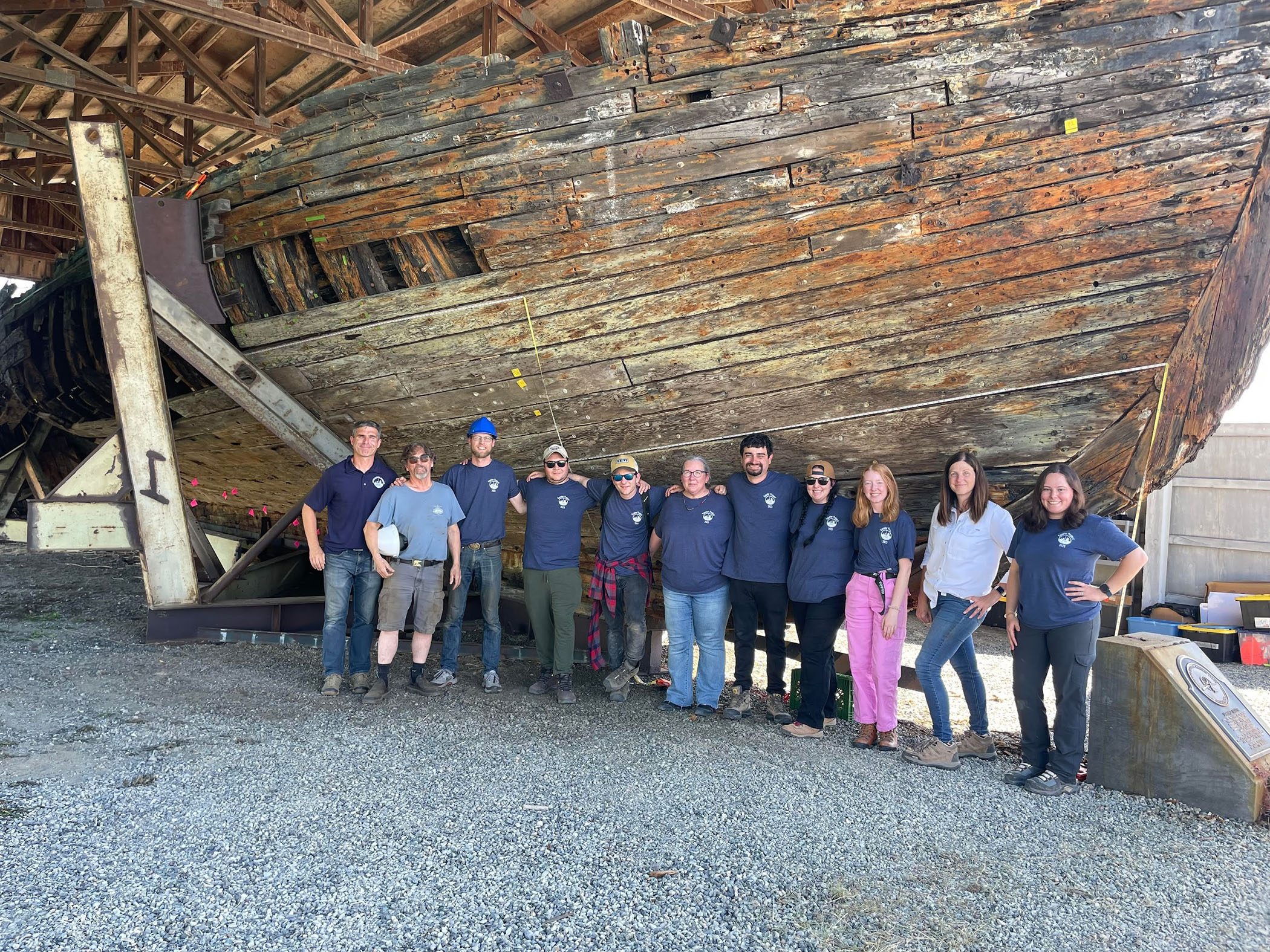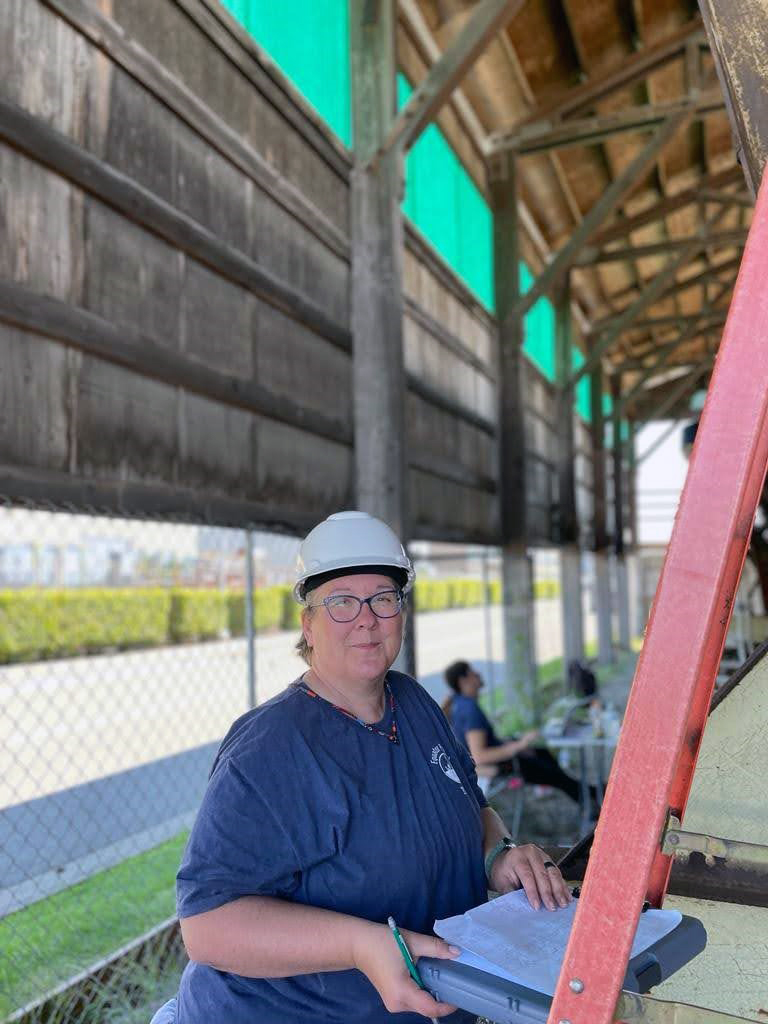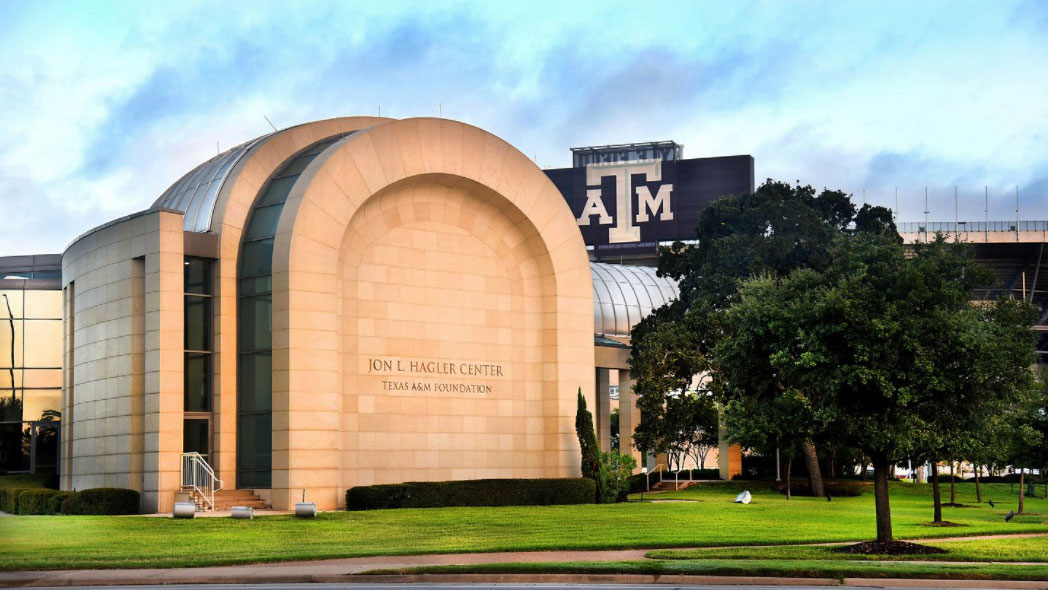
Some of the most valuable educational experiences for Aggie undergraduates take place far from a classroom. Such was the case for senior anthropology major Kimberly Price ’24, who was one of several Texas A&M University nautical archaeology students to travel with faculty members to a most unusual learning environment — an open shed in a marina in the coastal town of Everett, Wash., which houses the remains of a dilapidated ship.
To the untrained eye, the Equator looks like nothing more than a feast for termites. The 135-year-old ship has been dry-docked since 1967. Parts of the ship are intact, but the stern has collapsed. Through the years, many individuals and organizations have worked to restore the ship or preserve it for display, but the ravages of time and the elements, as well as the enormous cost of such projects, means the ship has continued to deteriorate.
Though it is on the National Register of Historic Places, the Equator will soon be dismantled. Museums will salvage and repurpose its parts for public art displays, but the Equator as she is now will be gone forever.
Or maybe not.
Price and others in the Nautical Archaeology Program within the Department of Anthropology spent two weeks documenting the storied ship, working to preserve it digitally before it is demolished physically. Through their efforts to measure, photograph and scan every remaining plank and bolt on the wooden craft, the ship will endure long after they haul away its hull.
For student nautical archaeologists, the Equator is a valuable learning laboratory where science and history meet. The team from Texas A&M utilized drone photography and LiDAR scans to catalog its construction and reproduce a digital 3D version of the ship. During the research project, they also hosted an open house that brought 400 people to view the ship and learn more about its history. Thanks to the information they gathered, future students and scientists may continue to study the Equator and may someday even rebuild the sailing ship.
“This project shed new light onto traditional American naval craftsmanship and maritime heritage,” said Dr. Piotr Bojakowski, an assistant professor of nautical archaeology. “Being among few sailing vessels listed on the register of historic places, the Equator is an exceptional educational platform for undergraduate and graduate students. It provides a valuable and tangible link between local history, archaeology, conservation and cultural resources preservation.”
Standing next to the Equator felt like standing beside the Ark... If we can’t save them, we can at least document them.
Price relished the opportunity for hands-on learning that she gained through work with the Equator. Although she knew a lot about the history of the ship prior to her arrival in Washington, Price says touching and exploring the structure with her senses was a remarkable experience.
“Standing next to the Equator felt like standing beside the Ark,” she added, commenting on its size.

While the Equator might not be quite as famous as Noah’s Ark, it does have an interesting past. Built in 1888 by notable shipwright Matthew Turner, the Equator began its life as a two-masted sailing ship that carried people and cargo across the Pacific Ocean. One notable passenger was the author Robert Louis Stevenson. Scholars hypothesize that Stevenson’s voyages on the Equator may have inspired his books The Wrecker and In the South Seas.
Several times throughout her active years, shipwrights modified and retrofitted the Equator. She served as a tender to an Arctic whaling fleet and eventually ended her career as a gasoline-powered tugboat in Puget Sound. In 1956, she was discarded and left to decay in a breakwater, essentially a graveyard for ships at sea. She was hoisted out of the water and placed in her current location in 1967 with plans to restore and display her, but these plans never came to fruition.
Price has a passion for lost and abandoned artifacts like the Equator. “If we can’t save them, we can at least document them,” she said, noting that this ship and others like her are a time capsule of human and natural history. Beyond the schematics of the ship, there is more to be learned from the dendrochronology, or the study of its wood. Analysis of its composition can reveal the age of the wood, its provenance and events during the lifetime of those trees, including hurricanes and forest fires.
Students and faculty who worked on the Equator project are in the process of drafting an article about their work for the Institute of Nautical Archaeology Quarterly. Bojakowski has also encouraged students to produce posters about the project for presentation at various archaeological conferences.
Price, a Houston native who will graduate in December 2024, is considering graduate school. She describes finding Texas A&M's Nautical Archaeology Program as nothing short of transformative. At age 59, this non-traditional student who has a learning disability says working on the Equator was a true labor of love and appreciation.
“During our time spent studying the Equator, I came to closely identify with the ship and its struggles,” she shared. “Because I have experienced a variety of challenges in life, I sometimes feel like an abandoned artifact myself. But I have found my people and place in this program. It is the most amazing thing to be my age and to finally know what you want to be when you grow up.”

